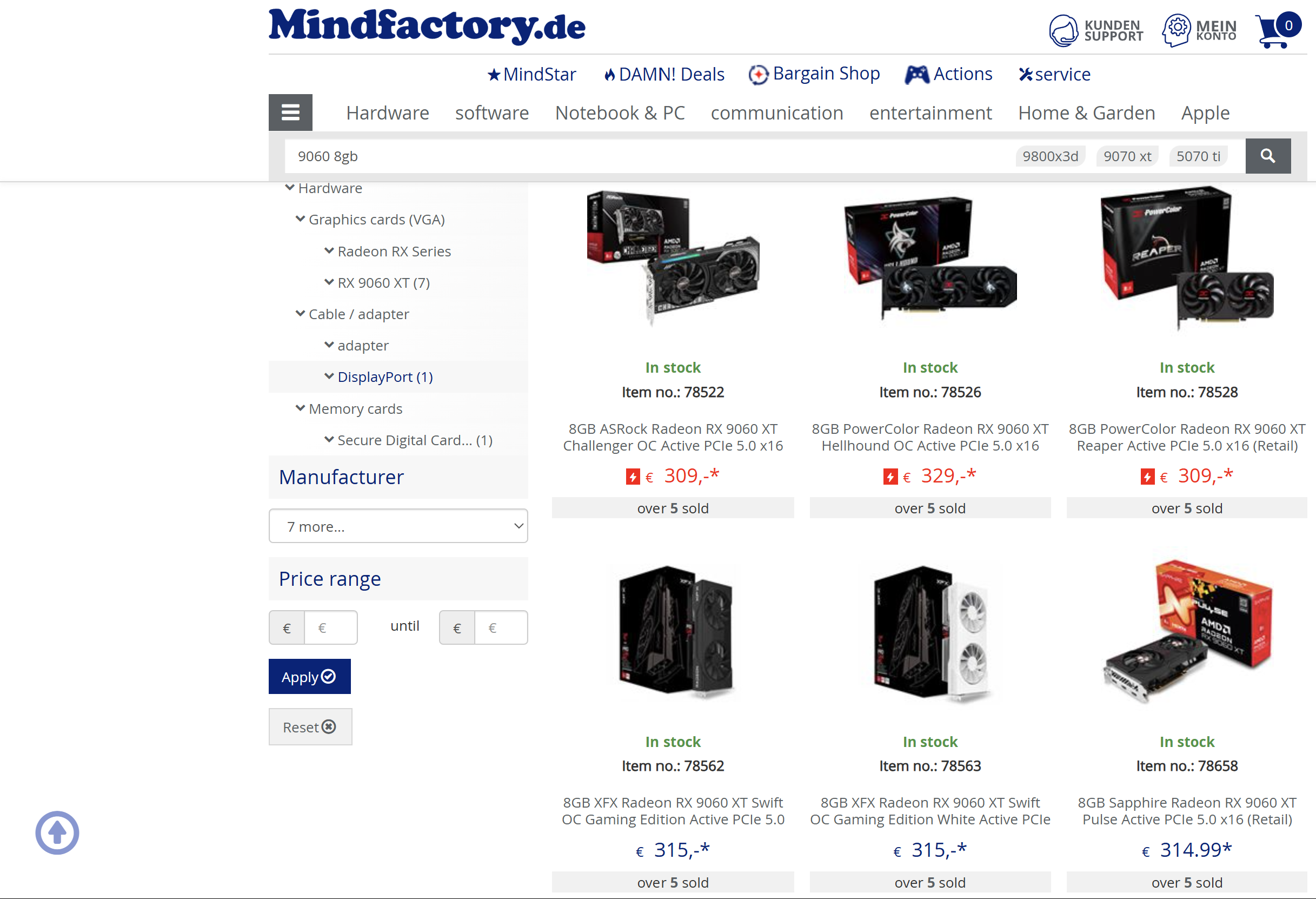We’re now deep into Nvidia and AMD‘s new GPU launches, with the former recently releasing the new low-end RTX 5050 8GB GPU. However, one retailer has made it alarmingly clear that consumers are looking elsewhere for gaming GPUs.
As reported by Wccftech, a German retailer, Mindfactory, has a low number of units sold on Nvidia RTX 5060 Ti (8GB) and the AMD Radeon RX 9060 XT (8GB), noticeably less than their 16GB counterparts – this is thanks to the retailer showing how many units have been sold on each product.
Essentially, it’s an indication that PC gamers don’t want 8GB GPUs, or at least a large majority prefer GPUs with more VRAM capacities. While it could also be a suggestion of low availability, that’s not been an issue for these lower-end GPUs in most regions recently, with inflated prices throwing consumers off.
It’s not a secret that games are becoming more VRAM-hungry, and while 8GB isn’t completely useless (it’s still relevant for 1080p gaming), it’s not the best option for games today. Frame Generation, which would significantly help performance with 8GB GPUs where necessary, increases VRAM consumption – and that’s the last thing these GPUs need.
Analysis: Hopefully, this is the last generation of 8GB GPUs…
So far, Intel appears to be the only one among the three major tech giants to abandon 8GB GPUs. AMD and Nvidia have stuck with 8GB configurations for their new GPUs, and if I’m honest, I don’t see any benefit to it.
Again, I’m not suggesting 8GB GPUs are pointless; there’s certainly a significant number of PC gamers on a budget who don’t need mid to high-tier hardware, which is where an 8GB card would make sense. However, the current trend of poor performance in PC games, combined with inflated prices of GPUs above their retail price, makes these graphics cards a hard sell.
The only place I would tolerate 8GB GPUs being used is in low-end and affordable gaming laptops. Laptop GPUs don’t match up to discrete desktop GPUs performance-wise, so expectations of decent frame rates are expected. But it’s not the same case when you build a desktop rig, where you expect a bang for your buck – and I don’t think 8GB of VRAM can achieve that.
It’s all besides the point, though, as the simple case of more VRAM-hungry games should be enough to put an end to 8GB cards. I’m just hopeful this generation will be the last we see of them…

